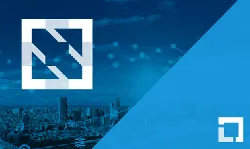
Introduction to Kubernetes on Edge with K3s 
This course provides an introduction to Kubernetes on Edge with K3s. It explores the use cases and applications of Kubernetes at the edge, with examples, labs, and a technical overview of the K3s project and the cloud native edge ecosystem. Participants will gain an understanding of the benefits of running software at the edge and how to use K3s to do so. ▼
ADVERTISEMENT
Course Feature
![]() Cost:
Cost:
Free
![]() Provider:
Provider:
Edx
![]() Certificate:
Certificate:
Paid Certification
![]() Language:
Language:
English
![]() Start Date:
Start Date:
Self paced
Course Overview
❗The content presented here is sourced directly from Edx platform. For comprehensive course details, including enrollment information, simply click on the 'Go to class' link on our website.
Updated in [March 06th, 2023]
This course provides an introduction to Kubernetes on Edge with K3s. It covers the use cases and applications of Kubernetes at the edge, as well as the cloud native edge ecosystem. Learners will gain an understanding of the challenges associated with edge compute, such as partial availability and the need for remote access. Through practical examples, students will gain experience of deploying applications to Kubernetes and get hands-on with object storage, MQTT and OpenFaaS. The course also introduces the fleet management and GitOps models of deployment, and helps learners understand messaging, and how to interface with sensors and real hardware. By the end of the course, learners will have a better understanding of the growing impact the cloud native movement is having on modernizing edge deployments.
[Applications]
Upon completion of this course, learners will be able to apply their knowledge of Kubernetes on Edge with K3s to deploy applications to the edge, understand the challenges associated with edge compute, and gain experience with object storage, MQTT, and OpenFaaS. They will also be able to understand the fleet management and GitOps models of deployment, and interface with sensors and real hardware. Additionally, they will be able to apply the cloud native movement to modernize edge deployments.
[Career Paths]
1. Edge Computing Engineer: Edge Computing Engineers are responsible for designing, developing, and deploying applications and services to edge locations. They must be knowledgeable in cloud native technologies such as Kubernetes, Docker, and OpenFaaS, and be able to troubleshoot and debug applications running on edge devices. Edge Computing Engineers must also be familiar with low-power hardware such as the Raspberry Pi, and be able to interface with sensors and real hardware. As edge computing continues to grow in popularity, the demand for Edge Computing Engineers is expected to increase.
2. Cloud Native Edge Developer: Cloud Native Edge Developers are responsible for developing applications and services that are optimized for edge computing. They must be knowledgeable in cloud native technologies such as Kubernetes, Docker, and OpenFaaS, and be able to troubleshoot and debug applications running on edge devices. Cloud Native Edge Developers must also be familiar with low-power hardware such as the Raspberry Pi, and be able to interface with sensors and real hardware. As edge computing continues to grow in popularity, the demand for Cloud Native Edge Developers is expected to increase.
3. Edge Computing Architect: Edge Computing Architects are responsible for designing and deploying applications and services to edge locations. They must be knowledgeable in cloud native technologies such as Kubernetes, Docker, and OpenFaaS, and be able to troubleshoot and debug applications running on edge devices. Edge Computing Architects must also be familiar with low-power hardware such as the Raspberry Pi, and be able to interface with sensors and real hardware. As edge computing continues to grow in popularity, the demand for Edge Computing Architects is expected to increase.
4. Edge Computing Consultant: Edge Computing Consultants are responsible for providing advice and guidance to organizations on deploying applications and services to edge locations. They must be knowledgeable in cloud native technologies such as Kubernetes, Docker, and OpenFaaS, and be able to troubleshoot and debug applications running on edge devices. Edge Computing Consultants must also be familiar with low-power hardware such as the Raspberry Pi, and be able to interface with sensors and real hardware. As edge computing continues to grow in popularity, the demand for Edge Computing Consultants is expected to increase.
[Education Paths]
Recommended Degree Paths:
1. Bachelor of Science in Computer Science: This degree path provides a comprehensive overview of computer science, including topics such as programming, software engineering, and computer architecture. It also covers the fundamentals of cloud computing and distributed systems, which are essential for understanding the use cases and applications of Kubernetes at the edge.
2. Master of Science in Cloud Computing: This degree path focuses on the development and deployment of cloud-based applications and services. It covers topics such as cloud architecture, cloud security, and cloud-native development. It also provides an in-depth understanding of distributed systems and the challenges associated with edge compute.
3. Bachelor of Science in Data Science: This degree path provides a comprehensive overview of data science, including topics such as data analysis, machine learning, and data visualization. It also covers the fundamentals of cloud computing and distributed systems, which are essential for understanding the use cases and applications of Kubernetes at the edge.
4. Master of Science in Artificial Intelligence: This degree path focuses on the development and deployment of AI-based applications and services. It covers topics such as AI algorithms, AI architectures, and AI-driven development. It also provides an in-depth understanding of distributed systems and the challenges associated with edge compute.
Developing Trends:
1. Cloud-Native Edge Computing: Cloud-native edge computing is becoming increasingly popular as organizations look to reduce latency and improve performance by running applications and services closer to the edge. This trend is driving the development of new tools and technologies, such as K3s, to enable the deployment of Kubernetes on the edge.
2. Automation and Orchestration: Automation and orchestration are becoming increasingly important for managing edge deployments. Tools such as GitOps and fleet management are being used to automate the deployment and management of applications and services on the edge.
3. Machine Learning and AI: Machine learning and AI are becoming increasingly important for edge deployments. AI-driven applications and services are being used to improve the performance and reliability of edge deployments.
Course Provider

Provider Edx's Stats at AZClass
The course introduces Kubernetes on Edge and K3s covering use cases for running computing at edge locations, supporting projects and foundations such as LF edge and CNCF, and how to deploy applications to the edge using open source tools such as K3s and k3sup. It also covers the challenges associated with edge computing, such as the need for partial availability and remote access. Through hands-on examples, students will gain experience deploying applications to Kubernetes and experience object storage, MQTT, and OpenFaaS first-hand. It also introduces fleet management and GitOps models for deployment and helps you understand messaging, and how it interfaces with sensors and actual hardware.
Discussion and Reviews
0.0 (Based on 0 reviews)
Explore Similar Online Courses

How To Build A Successful Profitable Amazon FBA Business

Stock Market Investing for Beginners

Python for Informatics: Exploring Information

Social Network Analysis

Introduction to Systematic Review and Meta-Analysis

The Analytics Edge

DCO042 - Python For Informatics

Causal Diagrams: Draw Your Assumptions Before Your Conclusions

Whole genome sequencing of bacterial genomes - tools and applications

Kubernetes for Beginners (Kubernetes + Docker)

Scalable Microservices with Kubernetes


Start your review of Introduction to Kubernetes on Edge with K3s